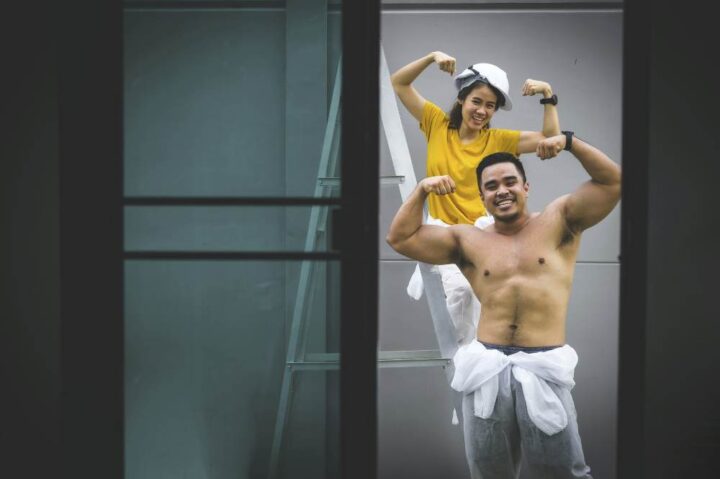Ready to Rumble? Your Ultimate Guide to Getting into Competitive Armwrestling
Armwrestling is not just a test of strength; it’s a battle of wills, a dance of strategy, and a contest of pure adrenaline. If you’ve been captivated by the sight of forearms bulging and veins popping in a fierce armwrestling match, you’re not alone.
This sport has captured the imagination of many, from casual enthusiasts to serious competitors. But how do you transition from a friendly match at a barbecue to competing in the big leagues?

This guide will walk you through everything you need to know to get started in competitive armwrestling.
Why Armwrestling?
The Thrill of Competition
There’s something primal about armwrestling. It’s a one-on-one contest where strength, technique, and mental fortitude are put to the test. Unlike team sports, armwrestling offers the unique opportunity to face your opponent alone, making every victory intensely personal.
A Growing Community
Armwrestling is experiencing a renaissance, thanks to social media, this great armwrestling blog and streaming platforms. Communities of enthusiasts are forming around the world, sharing tips, hosting events, and celebrating victories. This communal aspect makes it easier than ever to find like-minded individuals who share your passion.
Accessible to All
One of the best things about armwrestling is that it doesn’t require a lot of specialized equipment. All you need is a table, a willing opponent, and you’re good to go. This accessibility makes it an attractive option for those looking to get into competitive sports without a significant financial investment.
Building Strength and Endurance
Focused Workouts
While overall fitness is important, targeted exercises can give you the edge in armwrestling. Concentrate on building your wrist, forearm, bicep, and shoulder strength. Incorporate exercises like wrist curls, hammer curls, and shoulder presses into your routine.
Endurance Matters
Armwrestling matches can be grueling, sometimes lasting several minutes. Building endurance is crucial. High-repetition, low-weight exercises can help condition your muscles for the sustained effort required during a match.
Rest and Recovery
Don’t neglect rest. Your muscles need time to recover and grow stronger. Overtraining can lead to injury, which will set you back in your training. Make sure to incorporate rest days into your workout schedule.
Mastering Technique
The Basics
Understanding the basics of armwrestling technique is essential. Your position at the table, grip, and the angle of your arm all play a role. Start by mastering these fundamentals:
- Stance: Keep your feet shoulder-width apart, with one foot slightly forward for balance.
- Grip: Grip your opponent’s hand firmly, but not too tight.
- Arm Position: Keep your arm close to your body and your wrist straight.
Advanced Techniques
Once you’ve got the basics down, you can start experimenting with advanced techniques like the top roll, hook, and press. Each technique has its strengths and weaknesses, and the best armwrestlers can switch between them seamlessly during a match.
Practice Makes Perfect
Like any skill, mastering armwrestling technique requires practice. Find a training partner and practice regularly. Record your matches and review them to identify areas for improvement.
Mental Preparation
Stay Focused
Armwrestling is as much a mental game as it is a physical one. Stay focused during your matches and try to anticipate your opponent’s moves. Mental resilience can make the difference between victory and defeat.
Visualization
Visualization techniques can help you prepare for matches. Imagine yourself executing perfect technique and overpowering your opponent. This mental rehearsal can boost your confidence and improve your actual performance.
Dealing with Pressure
Competitive armwrestling can be intense, and the pressure can be overwhelming. Develop coping strategies to manage stress, such as deep breathing exercises, meditation, or listening to calming music before a match.
Finding Competitions
Local Events
Start by looking for local armwrestling events. Community centers, gyms, and clubs often host armwrestling competitions. Participating in these smaller events can give you valuable experience and help you build your reputation.
Online Resources
Use online resources to find competitions. Websites, forums, and social media groups dedicated to armwrestling can provide information about upcoming events. Don’t be afraid to reach out to event organizers for more details.
National and International Competitions
Once you’ve gained some experience, consider participating in national and international competitions. These events offer a higher level of competition and can help you gauge your skills against some of the best armwrestlers in the world.
Essential Gear
Armwrestling Table
An armwrestling table is designed specifically for the sport, with pads for your elbow and pins to grip during the match. Investing in a quality table can make a big difference in your training.
Grip Strengtheners
Grip strength is crucial in armwrestling. Use grip strengtheners to build up your hand and finger strength. These simple tools can be used anywhere, making them a convenient addition to your training regimen.
Wrist Wraps and Straps
Wrist wraps and straps can provide additional support during matches and training. They can help prevent injuries and give you the confidence to push your limits.
Joining a Club
Benefits of Membership
Joining an armwrestling club can provide numerous benefits, including access to experienced coaches, training partners, and organized events. Clubs often have specialized equipment and facilities that can enhance your training.
Finding a Club
Look for clubs in your local area or online. Many armwrestling clubs have websites or social media pages where you can find information about membership, training schedules, and upcoming events.
Building Relationships
Building relationships within the armwrestling community can provide support and motivation. Attend club meetings, participate in events, and engage with other members to make the most of your club membership.
Nutrition and Diet
Protein for Muscle Building
Protein is essential for muscle growth and repair. Incorporate lean protein sources like chicken, fish, and tofu into your diet. Protein supplements can also be beneficial, especially after intense training sessions.
Carbohydrates for Energy
Carbohydrates provide the energy needed for training and competition. Choose complex carbohydrates like whole grains, fruits, and vegetables to fuel your body.
Hydration
Staying hydrated is crucial for maintaining performance and preventing injuries. Drink plenty of water throughout the day, especially before and after training sessions.
Injury Prevention
Warm-Up and Stretching
Always warm up before training or competing. Stretching can improve flexibility and reduce the risk of injury. Focus on your arms, shoulders, and wrists.
Listen to Your Body
Pay attention to any signs of pain or discomfort. Pushing through pain can lead to serious injuries. Rest and seek medical advice if you experience persistent pain.
Use Proper Technique
Using proper technique can reduce the risk of injury. Avoid using excessive force or straining your muscles. Focus on controlled, deliberate movements.
Staying Motivated
Set Goals
Setting short-term and long-term goals can keep you motivated. Whether it’s improving your grip strength or winning a local competition, having clear goals can provide direction and purpose.
Track Your Progress
Keep a training journal to track your progress. Record your workouts, matches, and any observations about your performance. Reviewing your journal can help you identify areas for improvement and celebrate your successes.
Celebrate Achievements
Celebrate your achievements, no matter how small. Recognizing your progress can boost your confidence and keep you motivated to continue training and competing.
Learning from the Pros
Watch Competitions
Watching professional armwrestling competitions can provide valuable insights into techniques and strategies. Pay attention to how the pros handle different opponents and situations.
Follow Armwrestlers on Social Media
Many professional armwrestlers share tips, training routines, and behind-the-scenes glimpses of their lives on social media. Following them can provide inspiration and practical advice.
Attend Workshops and Seminars
Look for workshops and seminars led by experienced armwrestlers. These events can offer hands-on training and opportunities to learn from the best in the sport.
Competitive armwrestling is an exciting and challenging sport that offers numerous benefits, from physical fitness to mental resilience. By following the steps outlined in this guide, you can start your journey into the world of competitive armwrestling. Remember, the key to success is consistent training, proper technique, and a strong mindset.


